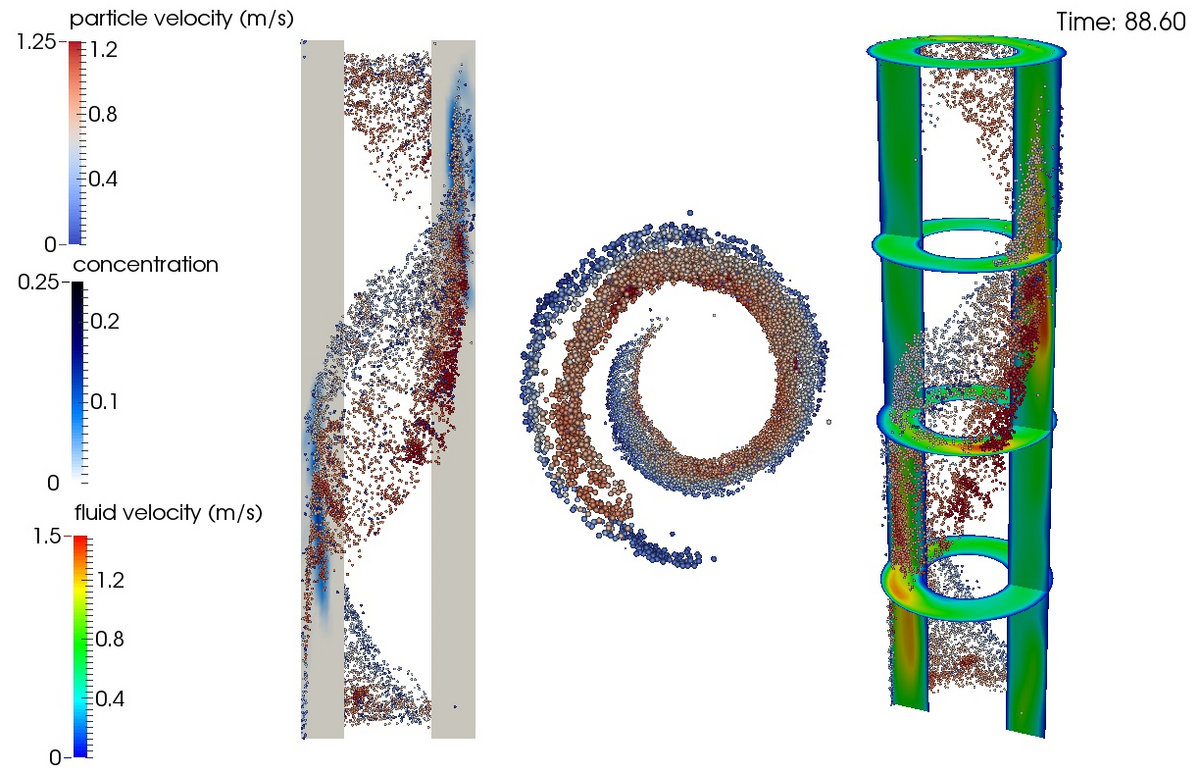| Title | Modeling and numerical calculation of multiphase transport in deep drilling technology |
| Funding | DFG standard procedure, BR 1864/16-1, 2021-2024 |
| Researcher | M.Sc. Kathrin Skinder M.Sc. Hozan Ibrahim |
Drilling Simulator Celle (DSC) and Institute of Technical Mechanics (ITM): The German Research Foundation (DFG) is funding a research project on the model-based, systematic optimization and automation of geothermal drilling processes.
Renewable energy has played an important role in the electricity market for years. Nevertheless, its share in the heating sector remains relatively low. The Federal Environment Agency currently estimates that renewable energies account for around 15 percent of Germany's final energy consumption for heating and cooling. It is expected that the previously dominant fossil fuels will be replaced to a large extent by the existing geothermal potential. But what exactly happens in geothermal boreholes, which can be used to generate heat for municipalities and local energy suppliers at depths of well over 1,000 meters?
By using numerical methods from fluid mechanics, the research project at Clausthal University of Technology's DSC and ITM aims to develop further contributions to reducing the cost of geothermal drilling, which remains the decisive factor for the economic viability of geothermal projects on an industrial scale. The focus is on the transport of the drill cuttings, which must be modeled using suitable methods for the conditions typical of deep drilling. These conditions can be, for example, high pressures and temperatures, the use of drilling fluids with complex flow properties and distances of several kilometers in variable environmental conditions.
The project, led by Professor Gunther Brenner from the ITM, draws on the institute's many years of preliminary work on the fundamental analysis of particle transport in fluids using state-of-the-art calculation techniques. These methods will be extended to include cuttings transport and validated using experimental data. This will make it possible to quantify previously undetected effects of secondary flows or the flow behavior of the drilling fluid on particle transport. This project will contribute to the clarification and better quantification of the hydrodynamic processes for the deep drilling process. However, the results obtained in the project are of a fundamental nature: in principle, they can also be transferred to other fields of technology with comparable issues, such as paper processing, wastewater treatment or food technology.
Relevant publications:
Aragall, R., S. Hahn, V. Mulchandani, G. Brenner; Multiscale Approach for Drilling Hydraulics Modeling, Oil Gas European Magazine, 1/2014, pp. 28-30.
Aragall, R., V. Mulchandani, G. Brenner; Optical measurement and numerical analysis of mono- and bidisperse coarse suspensions in vertical axisymmetric sudden-expansion, International Journal of Multiphase Flow, 69, 2015, pp. 63-80, doi: 10.1016/j.ijmultiphaseflow.2014.11.002.
Aragall, R., F. Yu, J. Dai, G. Brenner; Closure of Drift-Flux Models for Cuttings Transport Predictions, Oil Gas European Magazine, Vol. 40, 2015, pp. 28, ISSN 0342-5622.
Aragall, Roger, "Enhancement of cuttings transport models though physical experiments and numerical investigation of solid-liquid transport", Dissertation TU Clausthal, 30.10.2015.

